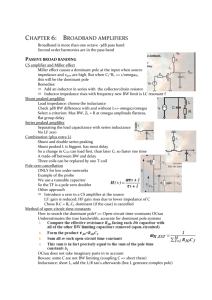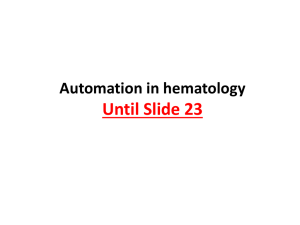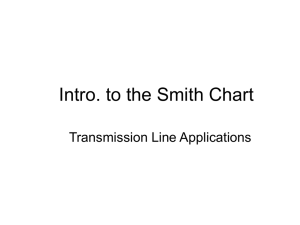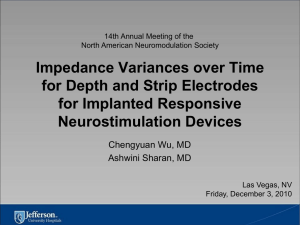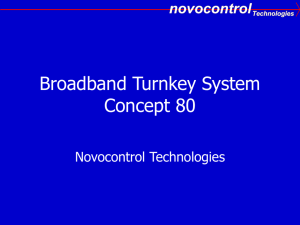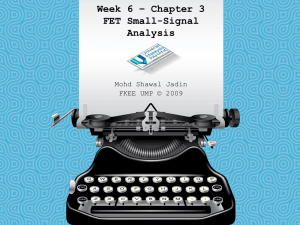High Frequency Analysis
advertisement
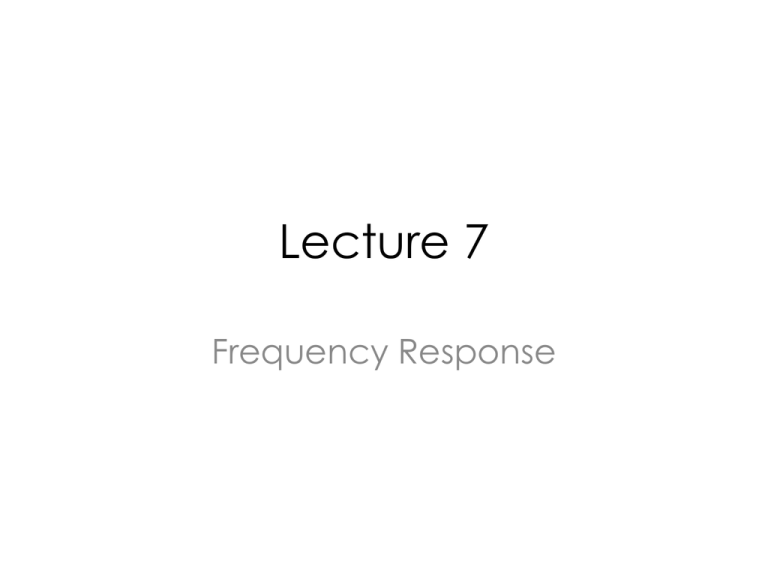
Lecture 7 Frequency Response Review of CS, CG and CD Amplifier Voltage Gain of a CS Amplifier Interpretation: The resistance at the drain Divided by the resistance in the source path Voltage Gain of a CD Amplifier Voltage Gain of a CG Amplifier If RS=0 and channel length modulation is ignored, Av is Resistance into the Drain Terminal Resistance into the Source Terminal Miller Effect Miller’s Theorem Typical Application of Miller’s Theorem Miller’s theorem is useful when Z appears in parallel with the main signal (i.e. the amplifier) Limitation of Miller’s Theorem Limitations: Interaction of poles through R3 and C3. Association of Poles with Nodes Each pole is determined by the product of 1. Total capacitance seen from each node to ground 2. Total resistance seen at the node to ground “Each node in the circuit contributes one pole to the transfer function” Common-Gate Example CS Stage • Output Impedance • Input Impedance • “Nodal Method” – Miller Approximation – “Zx” method • Equivalent Circuit Analysis – KCL – Dominant pole High Frequency Model of CS Stage CS Trade-Off L(um) W(um) GDS (uS) CDB (fF) CGD(fF) CGS(fF) 2 5.78 3.613 5.19 1.84 98.16 800n 2.56 3.79 0.915 0.803 17.3 180n 0.86 5.72 0.056 0.273 1.20 120n 0.64 9.55 0.029 0.201 0.55 Specs: AV=10 Vo,cm=0.6V I(M1)=10 uA gm=AV/RD Gmoverid_1=16.67 For Same IOUT, L↓→W↓→GDS↑(Ro↓) →CDS ↓ Trade-offs in GDS and parasitic capacitance. CS Trade-Off AV I (uA) L(um) W(um) GDS (uS) CDB (fF) CGD(fF) CGS(fF) 10 10 2 5.78 3.613 5.19 1.84 98.16 15 10 2 32.5 5.33 27.5 10.4 517.8 20 10 2 668.2 6.66 319.6 239.8 6,041.1 Specs: Vo,cm=0.6V gm=AV/RD For Same IOUT, L↓→W↓→GDS↑(Ro↓) →CDS ↓ Difficult to achieve high gain and high speed at the same time! Output Impedance Only Valid if Rs is large! Input Impedance Exclude CGS High frequency approximation (First order model) Input Impedance (KCL) Exclude CGS High frequency approximation (In parallel with CGS) “Nodal Method”(Miller Approximation) It is important to identify the high impedance node! Numerical example: RS=50 Ohms L=2.0 um AV=15 517.8 fF fin=4.65 GHz fout=69.9 MHz 16(10.40fF) CDB=27.51 fF, RD=60 KOhm Transfer Function “Nodal Method”(Refined Miller Approximation) (If RS is large!) (Capacitive) (Resistive) Equivalent Circuit Analysis Comparison to Miller Approximation Dominant Pole Approximation Transmission Zero Transmission Zero Finding a transmission zero in effective Gm. Source Follower (Strong interaction between XY, making it difficult to associate each pole with each node) Source Follower Transmission Zero 𝜔𝑧 = −𝑔𝑚/(𝐶𝑔𝑠 + 𝐶𝑔𝑑) Input Impedance Analysis of Input Impedance Miller Approximation: Av: (Negative Resistance) Can be used to oscillators. Output Impedance Equivalent Output Impedance Issues Common Gate Cascode (Gain from A to X) DC Input Resistance Will a large Rin increase the miller effect of CS dramatically? Input Resistance of Common Gate Note that ZL is not infinity if RD is replaced by a current source because ZL is in parallel with CD. Differential Pair (Differential Mode) (Differential Half Circuit) Differential Pair (Common-Mode) W3 is made as large as possible to minimize VDSAT. Consequence of Limited CMRR Differential Pair with High Impedance Load AC Ground (Dominant Pole) Differential Pair Example GM=166.19 uS GDS=1.3552 uS RD=90 Kohm AC analysis Use the Waveform Calculator Add voltages to the calculator Press Eval before you plot Plot in Magnitude/dB Transfer Function 3dB Bandwidth: 317.629 MHz Differential Pair with Current Mirror Small Signal Equivalent Model (Transmission Zero) Differential Pair with Current Mirror (Slow Path) (Fast Path)
